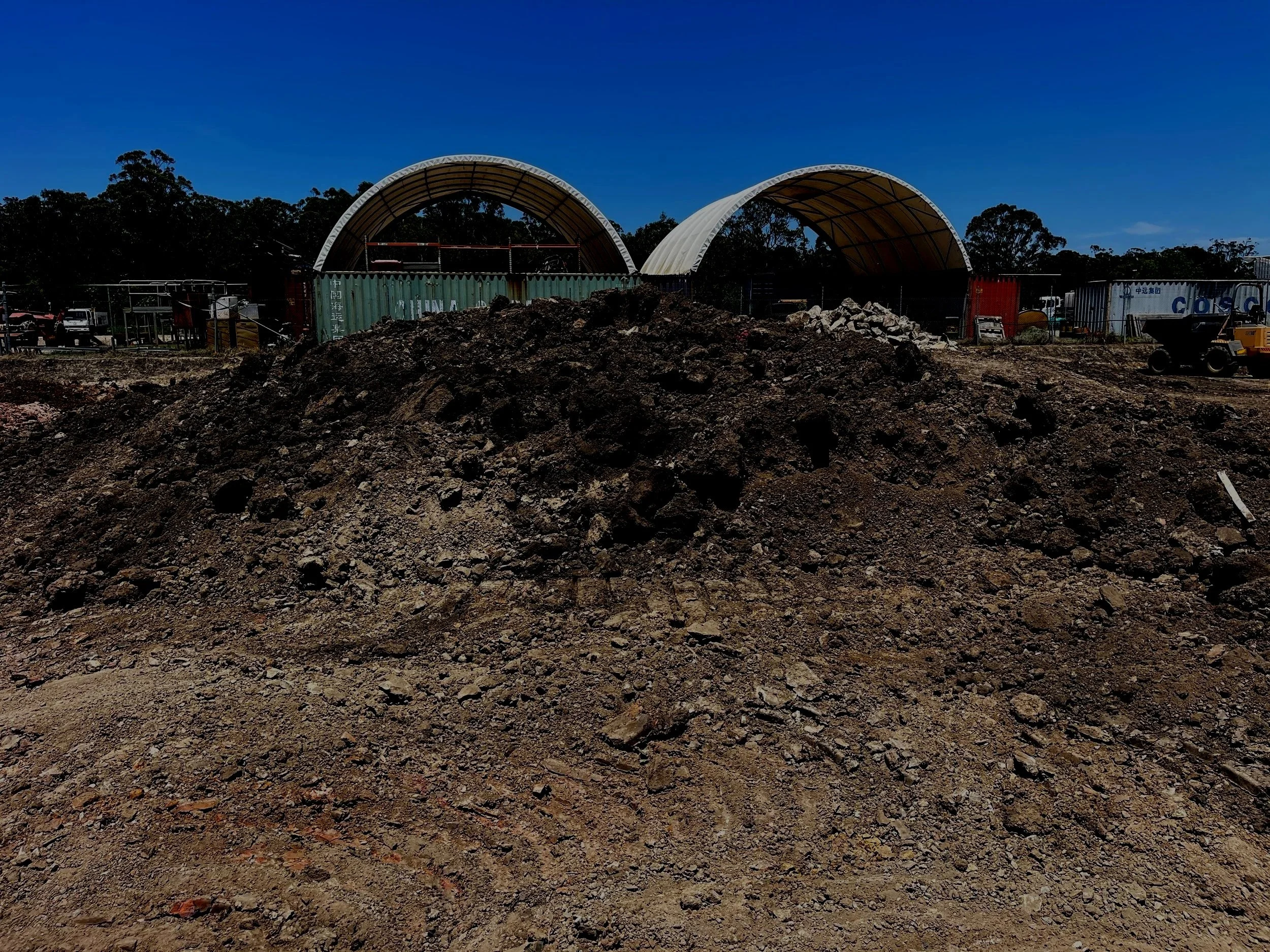
Trusted Asbestos In Soil Solutions
Why Asbestos in Soil Is a Serious Concern
Asbestos can enter soil through:
Demolition or poor disposal of buildings containing asbestos
Use of contaminated fill or topsoil
Buried asbestos cement sheeting (fibro) or pipes
Past illegal dumping or fire-damaged sites
Contaminated backyards, driveways, or rural properties
When soil is disturbed, fibres can become airborne, posing a serious inhalation risk to workers and nearby residents. NSW regulations classify asbestos in soil as a contaminated land issue, requiring expert assessment and management under:
The NSW Work Health & Safety Regulation 2017
The NSW Contaminated Land Management Act 1997
The National Environmental Protection Measure (NEPM 2013)
Our Services – Asbestos in Soil Management Made Simple
1. Soil Assessment & Sampling
We conduct targeted asbestos-in-soil assessments in accordance with the NEPM and NSW EPA guidelines. This includes:
Preliminary Site Investigations (PSI) or Detailed Site Investigations (DSI)
Soil sampling and screening for bonded and friable asbestos
NATA-accredited laboratory analysis using polarised light microscopy (PLM) or SEM (if required)
Field inspections to identify visible fragments, debris, or buried asbestos
We identify both Actual Contamination and Potential Contamination to determine risk and response needs.
2. Remediation Planning & Contractor Oversight
If asbestos contamination is confirmed, we develop a Remediation Action Plan (RAP) that outlines:
Areas to be excavated, capped, or remediated
Whether a licensed asbestos removal contractor is required
Health and safety controls including air monitoring
Soil reuse or off-site disposal protocols (based on waste classification)
We also provide on-site environmental supervision, coordinate licensed contractors, and manage air or dust monitoring during remediation works.
3. Validation & Clearance Reporting
Following remediation or risk management, we prepare clear, regulator-ready documentation, including:
Validation sampling and analysis
Documentation of remediation works, air monitoring, and contractor sign-off
Final asbestos in soil clearance report
Suitable for submission to council, EPA, certifiers, or auditors
We can also assist with Site Audit Statements (SAS) if your DA or consent condition requires an accredited auditor’s sign-off.
Common Sites Where Asbestos in Soil Is Found
Former residential or rural blocks with fibro homes
Sites filled with imported topsoil or road base
Disused industrial or agricultural land
Areas near burn piles, sheds, or backfilled demolition debris
Redevelopment sites with unknown historical use
If you're unsure whether a site is at risk — we can help you screen early and avoid costly delays.
Why Choose Confluence Environmental?
NSW-specific experience in asbestos in soil assessments
Licensed asbestos assessors and environmental consultants
Compliance with NEPM (ASC), WHS Regulation, and EPA waste classification
Fast, fixed-fee quotes and site mobilisation
Trusted by developers, councils, and infrastructure firms across NSW
We help you stay safe, stay compliant, and keep your project moving.
Where We Work
We assess and manage asbestos-contaminated soil across:
Sydney and Greater Western Sydney
Central Coast
Newcastle & Lake Macquarie
Hunter Valley and Upper Hunter
South Coast, Mid North Coast, and regional NSW
Expert Asbestos in Soil Assessment and Management
Need to assess asbestos contamination in soil?
Confluence Environmental provides expert asbestos in soil investigations across the Central Coast, Newcastle, Hunter Valley, Port Stephens, Lake Macquarie, Sydney, and the Blue Mountains.
We conduct site inspections, soil sampling, and laboratory analysis to assess bonded and friable asbestos contamination — helping you manage risk, support development approvals, and meet NSW EPA and council requirements. Clear reports. Fast turnaround. Expert guidance included.
Frequently Asked Questions (FAQ) – Asbestos in Soil
Q: How does asbestos end up in soil?
Asbestos can enter soil through:
Demolition of old buildings containing fibro sheeting or asbestos cement
Use of contaminated fill material or recycled road base
Buried asbestos fragments (from illegal dumping or fire-damaged structures)
Backfilled trenches, driveways, or rural sheds built before asbestos bans
These materials can break down over time and pose a risk when disturbed.
Q: What are the risks of asbestos-contaminated soil?
When asbestos-containing material in soil is disturbed or broken, fibres can become airborne and inhaled, potentially leading to serious health issues such as asbestosis, mesothelioma, or lung cancer. Soil disturbance during excavation, landscaping, or construction poses the highest risk — especially if friable asbestos is present.
Q: How do I know if my site has asbestos in the soil?
You should consider an assessment if:
Your property contains or formerly contained fibro structures, sheds, or pipework
The site has had fill imported from an unknown source
There are visible fragments of cement sheeting or unusual material in the soil
The site is flagged by council or within a Contaminated Land Register
We recommend an asbestos-in-soil investigation, which includes soil sampling and laboratory testing.
Q: Who can manage and clear asbestos-contaminated soil?
Only qualified professionals should assess or manage asbestos in soil. You’ll typically need:
An environmental consultant (like Confluence Environmental) to conduct sampling, reporting, and risk assessment
A Class A or B licensed asbestos removal contractor for excavation or clearance
Validation sampling and a final clearance report for council, the EPA, or project auditors
We coordinate the entire process and ensure compliance with NSW WHS and EPA regulations.
Q: What’s included in an asbestos in soil clearance report?
A clearance report documents:
Areas assessed and excavated
Soil sampling results (before and after remediation)
Asbestos types and concentrations
Validation that asbestos levels are below regulatory limits
Compliance with the NEPM (ASC 2013) and NSW EPA/WHS regulations
Photos, waste tracking, and removal documentation (if applicable)
It’s often required for DA approvals, project handover, or auditor sign-off.
